Steel, aluminum and ceramics. The evolution of lightweight protection
Historically, the very first way to reduce mass (for example, in accordance with the characteristics of the available chassis) was to reduce the thickness of the armor with a corresponding drop in the level of protection. The development of new steel alloys with higher characteristics was also carried out. Later, the search began for other metals and non-metallic materials that combine strength and low weight. Finally, from a certain time in the field of light armored vehicles, combined and spaced armor, previously used only on heavy vehicles, was used. In addition, we should not forget about the possibility of installing a dynamic or active protection that complements its own body armor.
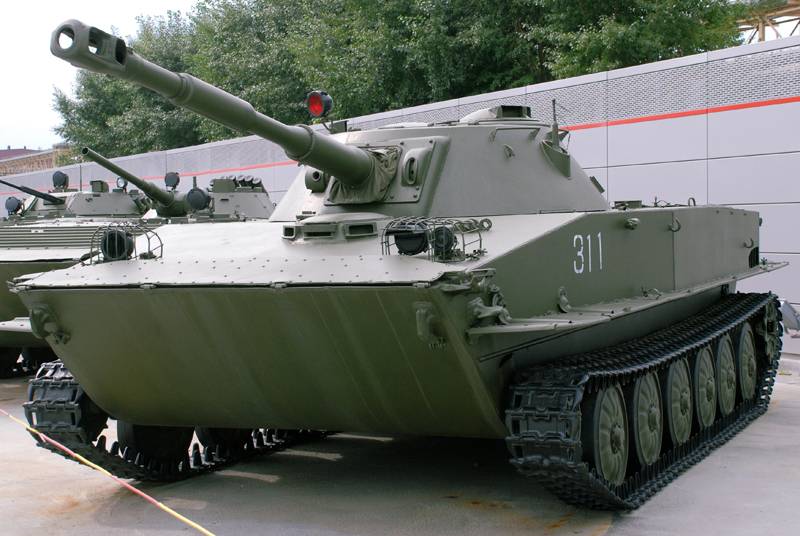
The floating tank PT-76. Photo Russianarmy.ru
Steel and floating
As a first example of the domestic light combat armored vehicle of post-war development, you can consider a floating tank PT-76. It was created in the late forties in accordance with a special technical task. This machine had to have anti-bullet protection and swim well, which made special demands on the design as a whole. The tasks were successfully solved, although by today's standards the resulting tank was not distinguished by high perfection or outstanding protection characteristics.
The floating tank of a new type received a welded armored hull of a larger size, designed to ensure proper buoyancy. The material of the hull was armor steel "2P". The frontal protection of the machine consisted of sheets 11 and 14 mm thick, the bead and the feed were 14 and 7 mm thick, respectively. From above, the car was protected by a 5-mm roof, from below - by a bottom 7 mm thick. The tower reservation was from 8 to 17 mm thick.
Chassis tank The PT-76 had a length of 6,91 m and a width of about 3 m. In the course of further modernization, the hull was finalized, but its main features did not change. The combat weight of the floating tank was 14 tons - a little less than half was in the armored hull and turret.
Armor thickness up to 14-17 mm, including those installed with an inclination of up to 80 °, had limited strength, and therefore PT-76 had limited protection characteristics. The steel armor of this machine is guaranteed to withstand the entry of small-arms weapons and fragments from all angles. The reinforced frontal projection could also withstand shelling from large-caliber systems and even small-caliber cannons. Moreover, any tank or anti-tank gun of the late forties guaranteed to hit the PT-76 at all effective ranges. The situation was similar with the recently appeared anti-tank grenade launchers.
The floating tank PT-76 met the requirements, but over time it became morally obsolete. One of the reasons for this was the low perfection of the design of armor protection. Already in the early sixties, a project of deep modernization of the reservation was developed, which provided for the replacement of the main material of the hull. In 1961, the VNII-100 manufactured the PT-76 test case using D20 aluminum alloy. Full-scale tests showed that, with a similar level of protection, such a body would be substantially lighter than steel. This building did not go to the series, but showed the potential of aluminum booking. In the future, these ideas have been used in new projects.
Steel and aluminum
The following example of a successful construction relief can be the Soviet infantry fighting vehicles BMP-1 and BMP-2. The first of these was developed at the GSK-2 Chelyabinsk Tractor Plant at the turn of the fifties and sixties in accordance with the new technical specifications and taking into account the available technologies. As a result, a very interesting construction was created, which included uncharacteristic elements. To obtain an optimal combination of mass and protection, it was proposed to combine steel and aluminum.
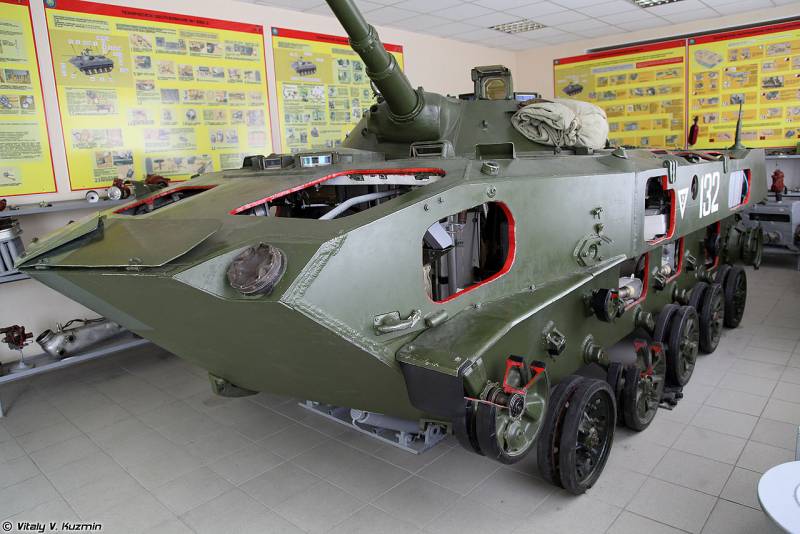
Educational layout BMD-1. The windows in the building allow you to evaluate the reservation. Photo by Vitalykuzmin.net
The basis of the welded hull for the BMP-1 again became steel sheets of high hardness. The steel armored steel forehead had a thickness from 7 mm (upper part with inclination 80 °) to 19 mm (lower). Boards are made of 16- and 18-mm sheets. Feed had similar protection options. The greatest thickness of the tower parts reached 33 mm. An interesting feature of the new car was an additional cover above the engine compartment. To protect against fire and external influences, a large cover with characteristic transverse ribs appeared on the upper front sheet. It was made of ACM alloy - aluminum with the addition of zinc and magnesium.
The BMP-1 hull length exceeded 6,73 m, its width was about 2,9 m. The combat weight of the vehicle was determined at the level of 12,7-13 t. The welded steel case without parts and units installed on it weighed slightly more than 3870 kg. Steel tower - total 356 kg. Frontal cover-lid of ACM in assembled form had a mass of about 105 kg.
As requested by the customer, the BMP-1 could withstand the shelling of 7,62-mm armor-piercing bullets from all angles. Also, all the booking sheets detained small and light fragments. Frontal projection defended from large-caliber machine guns at zero range. Shells of foreign guns of caliber 20 mm could not hit the car in the forehead from a distance of more than 100 m. For 23-mm systems, the maximum range of destruction was 500 m. At the same time, the BMP-1 had no real protection against tank shells and anti-grenades.
The BMP-1 did not require a particularly high level of protection, and the necessary characteristics were obtained due to the successful combination of already mastered and new materials. In fact, this infantry fighting vehicle can be considered the first large-scale domestic model, in the construction of which aluminum booking was used. However, such a “record” did not last too long, and soon an even more interesting armored car appeared.
Aluminum BMD
After the experience with the aluminum case for PT-76, Soviet scientists continued to work on finding the best options for lightweight protection and materials for it. By the mid-sixties, a new alloy of aluminum, magnesium and zinc was created under the designations ABT-101 and 1901. This alloy was considered as the basis for bulletproof booking of light combat vehicles. Soon, based on it, an ABT-102 / 1903 alloy was created, which had a different viscosity, and due to this it could provide protection against artillery shells.
In 1965, the Volgograd Tractor Works brought to trial the experienced BMD-1 airborne combat vehicles. During their development, the main task was to reduce the size and weight to values corresponding to the capabilities of military transport aircraft. It was succeeded to reduce weight due to use of aluminum armor like ABT-101 and some other light alloys. However, it was not possible to completely get rid of relatively heavy steel. Some parts were still made from it.
Frontal protection BMD-1 included several aluminum sheets placed at different angles to the horizontal and the longitudinal axis of the machine. This design has allowed to further increase the thickness of the reservation. The upper parts of the forehead were 10 mm thick, the middle ones were 32 mm, the lower ones were 10 mm. The hull board was assembled from sheets of thickness 20 and 23 mm. The feed consisted of parts with a thickness of 15-20 mm. The tower was made of steel, the maximum thickness of its protection was 22 mm.
The BMD-1 case had a total length of 5,4 m with a width slightly more than 2,5 m. The combat weight of the entire machine was determined in 7,2 t. According to the technical specifications, the car was supposed to protect the crew from firing from the front hemisphere of the 12,7 mm. All-round protection against 7,62-mm armor-piercing bullets was also required. Thus, the level of protection BMD-1 to some extent repeated characteristics of the BMP-1. The assault vehicle was inferior to an infantry vehicle only in terms of the strength of the frontal armor. At the same time, the more compact ABT-101 alloy case was about twice as lighter than the steel one used on the BMP-1.
Later on the BMD-1 chassis was created a new airborne assault vehicle with a different combat compartment and weaponry. At the same time, the aluminum case did not undergo major changes - in fact, the BMD-2 differed from its predecessor only in weapons and in some internal devices. In the mid-eighties, a completely new BMD-3 machine, based on other ideas and solutions, went into the series. Nevertheless, modern aluminum armor was widely used in this project.
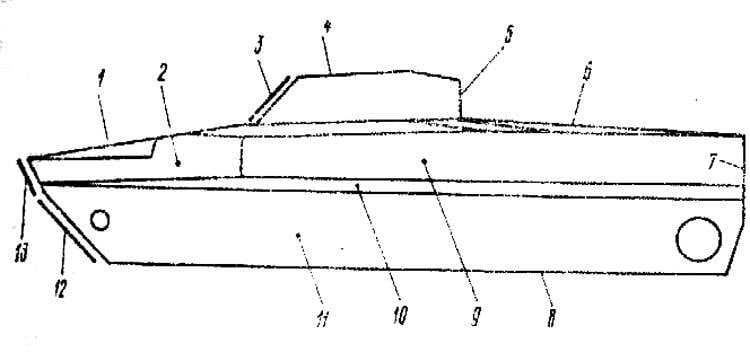
Armored protection BMP-3. 1 - upper frontal part (mm ABN-18 102); 2 - zygomatic sheet (60 mm ABT-102); 3 - frontal projection of the tower (16 mm BT-70Sh + 70 mm air gap + 50 mm ABT-102); 4 - tower roof (18 mm ABT-102); 5 - aft tower (43 mm ABT-102); 6 - roof (15 mm ABT-102); 7 - feed (13 mm ABT-102); 8 - bottom (mm 10 AMG-6); 9 - board (43 mm ABT-102) 10 - niche sheet (15 mm ABT-102): 11 - lower board (43 mm ABT-102); 12 - lower frontal part (10 mm BT-70Sh + 70 mm air gap + 60 mm ABT-102); 13 - middle frontal part (10 mm BT-70Sh + 70 mm air gap + 12 mm BT-70Sh + 60 mm ABT-102). Figure Btvt.nador.ru
Aluminum and steel for infantry
In the eighties, in parallel with the promising BMD-3, a new infantry fighting vehicle BMP-3 was created. When it was created, the Kurgan Special Design Bureau of Machine Building took into account the need to increase the level of protection in connection with the development of weapons of light armored vehicles of a potential enemy. It was necessary to provide protection against 30-mm projectiles, but at the same time to prevent unacceptable weight gain. The solution of such problems was directly related to the use of a new reservation.
BMP-3 received an exploded reservation, built on the basis of aluminum parts made of ABT-102 alloy and armored steel BT-70Sh. The upper frontal and zygomatic body parts are made of aluminum and have a thickness of 18 and 60 mm, respectively. Medium frontal part with a slight forward bend includes 10 mm steel, 70-mm air gap, 12-mm steel and 60-mm aluminum sheets. The bottom part has a similar construction, but dispenses with an internal steel sheet. Boards are assembled from ABT-102 sheets 15 and 43 mm thick. The roof, the stern and the bottom are 15, 13 and 10 mm thick, respectively. The forehead of the tower received protection in the form of 16 mm steel, 70 mm air and 50 mm aluminum. An additional protection of the frontal projection is a wave deflector, made of armor steel of small thickness.
Distributed and homogeneous booking The BMP-3 provides all-round protection against large-caliber small arms. Frontal projection withstand shelling from 30-mm guns from a range of 200 m. At the time, various mounted modules were also offered to increase the level of protection. Overhead panels were designed to improve ballistic protection, and special dynamic protection helped withstand shelling from an anti-tank grenade launcher.
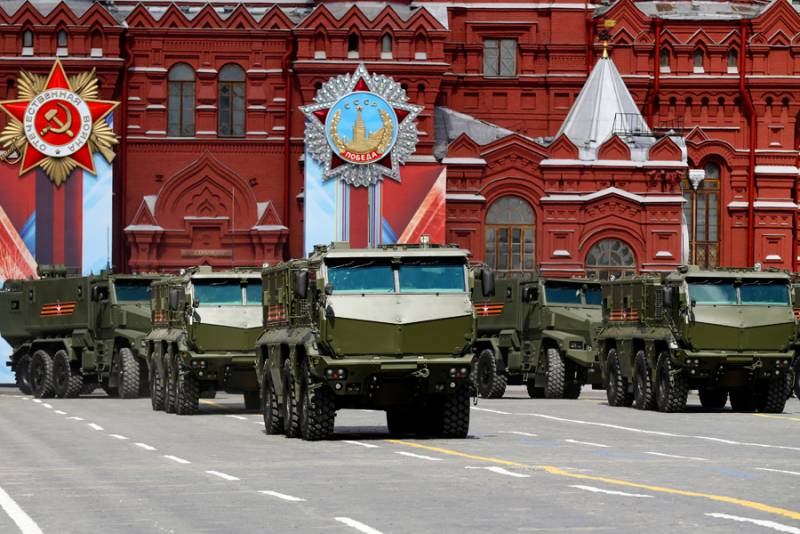
Armored cars "Typhoon-K" in the parade. Photo of the Ministry of Defense of the Russian Federation / mil.ru
The body of the BMP-3 has a length of 7,14 m with a width of about 3,3 m. The combat weight of the vehicle as a whole is 18,7 t. At the same time, the mass of the armored body made of steel and aluminum does not exceed 3,5 t. According to known data, the use of ABT-102 alloy has reduced the mass of the body almost a third compared to a steel unit with the same level of protection. In addition, relatively thick aluminum sheets made it possible to assemble a rigid case without separate power elements, which led to additional weight savings.
Steel and ceramics
Further development of the means of protection leads to new versions of armored vehicles, distinguished by a rather high resistance to major threats. Domestic cars of the “Typhoon-K” family, created by KamAZ in recent years, can be considered a good example of this. In several projects of this line it was possible to get very remarkable results in the field of protection.
The armor hulls of the Typhoon-K machines receive combined protection. A relatively thin outer metal sheet is used, under which ceramic tiles with specified characteristics are placed. The bottom layer of armor is a thicker steel sheet. When hit in such a package, a bullet or a fragment breaks through the outer layer, wasting some energy, and ceramics slows it down. In addition, steel and ceramics have different parameters of strength and hardness, which provokes the destruction of the striking element. Bullet and pottery fragments are held by an internal steel sheet.
One of the first was presented so-called. body armored car KAMAZ-63969. His combined armor could withstand shelling from 14,5-mm weapons. There was also a variant with less powerful armor protecting against 12,7-mm bullets. This version of the armored vehicle coped with all the challenges, but did not interest the customer. A sample called “Typhoon K-63968” went to the series, which was distinguished by its layout and booking characteristics. However, the protection architecture remains the same and involves the use of ceramic tiles.
The serial "Typhoon-K" has a body length of just under 9 m and a width of about 2,5 m. The total weight of the vehicle with a load up to 2,6 t exceeds 24,7 t. It is possible to tow a trailer weighing up to 8 t. At the same time, the manufacturer does not specify the weight of the actually protected body.
Another variant of the combined booking using ceramic materials is implemented in the project “Typhoon K-53949”, also known as “Typhoon 4х4” and “Typhoonian”. In this case, the ceramic plates are placed between the sheets of aluminum armor. This protection corresponds to the level of 3 standard STANAG 4569 and allows you to withstand armor-piercing rifle bullets caliber 7,62 mm.
“Typhoon 4X4” received a hood assembly with a total length of less than 6,5 m and a width of about 2,5 m. The curb weight of such a car is 12 t, another 2 t falls on the payload. As in the case of a larger sample, the developers are in no hurry to specify the mass of the body itself and its protection, which does not allow to fully appreciate the weight perfection of the design.
***
In the distant past, designers of armored vehicles faced a serious problem in the form of a direct relationship between the level of protection and mass. Armored cars with steel hulls could show high resistance to the striking elements only with an appropriate weight. However, later the development of metallurgy and the emergence of new alloys made it possible to solve these problems, thanks to which a considerable number of combat vehicles appeared in our country and abroad, combining low mass and good protection.
The first solution to the problem of mass and protection of steel was aluminum alloys, which could be used both independently and in combination with other materials or even with additional attachments. Next came the new ceramics, also suitable for creating a combined protection. The development of metals and ceramic materials continues and leads to the emergence of new protection options.
It is easy to see that attempts to reduce the weight of the car while obtaining good protection led to serious results by the mid-sixties. The aluminum and steel armor of the BMP-1, and after it the BMP-2, could protect the crew from small-caliber artillery shells. In the subsequent BMP-3 project, the combination of different materials and the presence of an air gap made it possible to once again improve protection. At present, such developments are developing and lead to obtaining new remarkable results.
The post-war development of materials science, which led to the emergence of new alloys and non-metallic materials, gave a serious impetus to the development of armored combat vehicles of various classes. Engineers were able to increase the protection performance of their machines without a significant increase in their mass. The resulting equipment is still in service with many countries, and all new projects are created based on existing experience. It should be expected that in the distant future there will be fundamentally new materials that will once again improve the performance of armored vehicles, and the processes of recent decades will be repeated.
Based on:
http://russianarms.ru/
http://otvaga2004.ru/
http://btvt.narod.ru/
http://masters.donntu.org/
https://popmech.ru/
http://mil.ru/
http://roe.ru/
http://interpolitex.ru/
Baryatinsky M.B. The floating tank PT-76. From the Neva to the Ganges and the Suez Canal. - M .: Yauza, Eksmo, 2016.
Solyankin A. G., Pavlov M. V., Pavlov I. V., Zheltov I. G. Domestic armored vehicles. XX century. - M .: Zeihgauz, 2010. - T. 3. 1946 – 1965.
Catalog of units and parts of the infantry fighting vehicle BMP-1. - M .: Military Publishing, 1971.
Gomyrin OA, Shumilov A.Ya. Features of the hull and turret BMP-3 // Bulletin of armored vehicles, 1991. No.5.
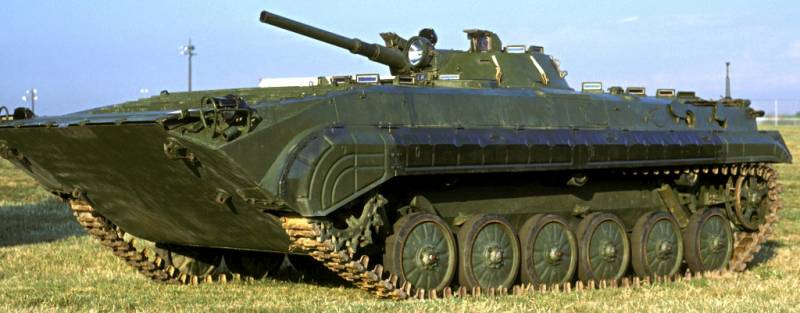
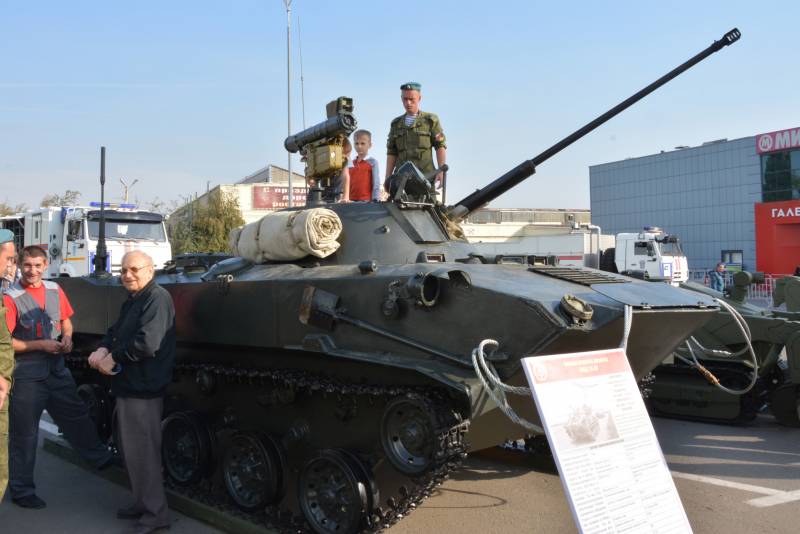
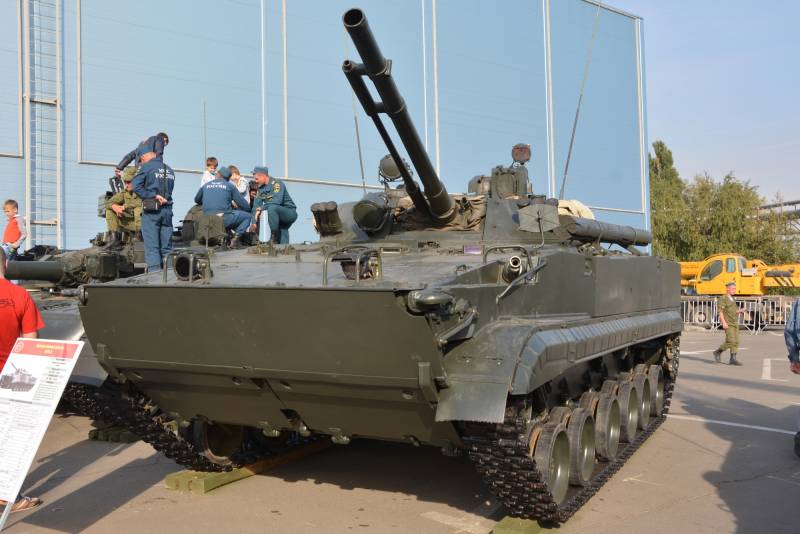
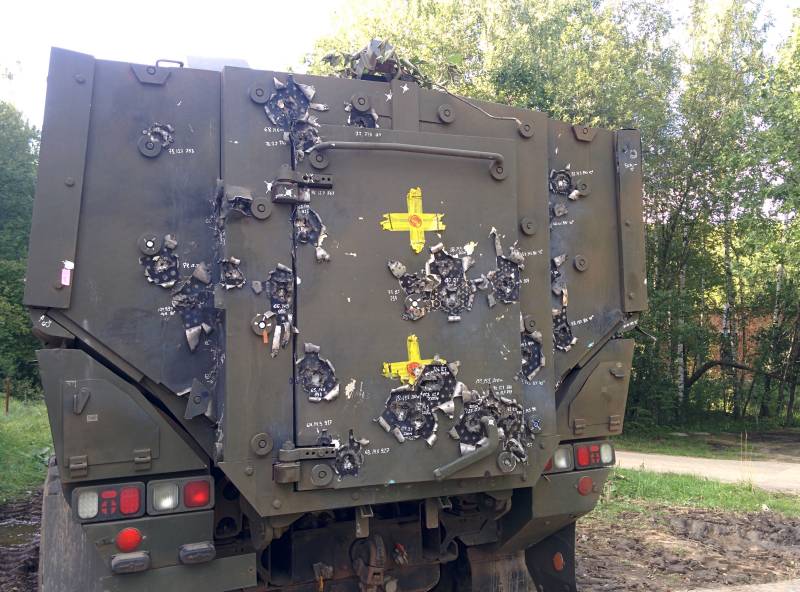
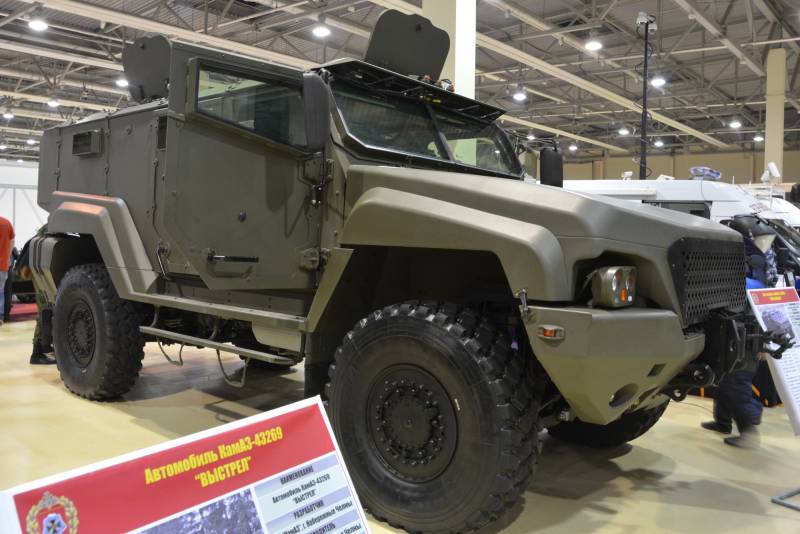
Information